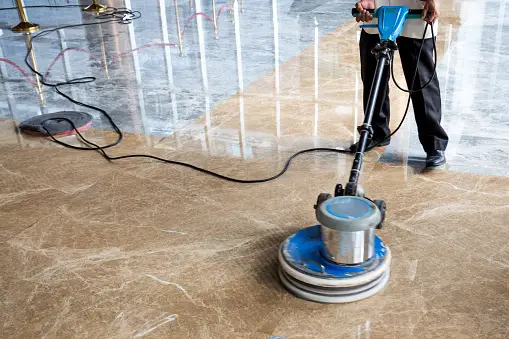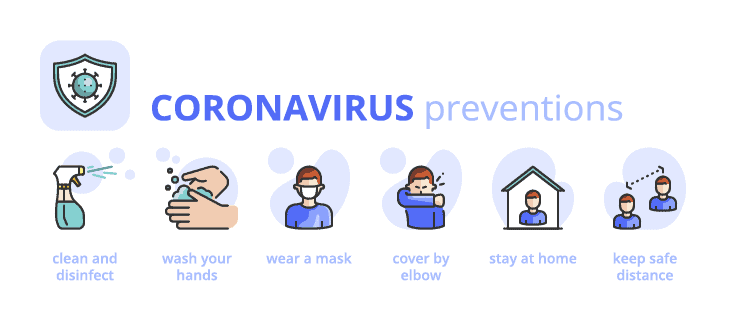
Maintaining Clean Air: Strategies for Indoor Air Quality in Homes and Offices
Date Posted:
March 7, 2024
Introduction
Maintaining clean air is essential for promoting a healthy and comfortable indoor environment in both homes and offices. Poor indoor air quality can lead to various health issues, including respiratory problems, allergies, and fatigue. In this article, we’ll explore effective strategies for improving indoor air quality and creating a safer and more pleasant living and working environment.
Understanding Indoor Air Quality
Indoor air quality refers to the cleanliness and purity of the air within a building or enclosed space. It is influenced by factors such as ventilation, pollutant sources, and occupant activities. Poor indoor air quality can result from the accumulation of pollutants such as dust, mold, pet dander, chemicals, and volatile organic compounds (VOCs).
Importance of Indoor Air Quality
Maintaining good indoor air quality is crucial for several reasons:
- Protecting health: Poor indoor air quality can exacerbate respiratory conditions, trigger allergies, and contribute to the spread of infectious diseases.
- Enhancing comfort: Clean air promotes a more comfortable and enjoyable indoor environment, reducing unpleasant odors and irritants.
- Increasing productivity: Improved indoor air quality can enhance cognitive function, concentration, and productivity in both home and office settings.
Common Indoor Air Pollutants
Common indoor air pollutants include:
- Dust and particulate matter
- Mold and mildew
- Pet dander and allergens
- Tobacco smoke
- Household chemicals and cleaning products
- VOCs from building materials, furniture, and appliances
Strategies for Improving Indoor Air Quality
Implementing proactive measures to improve indoor air quality can significantly benefit occupants’ health, well-being, and productivity. Here are some effective strategies for maintaining clean air in homes and offices:
1. Enhance Ventilation
Good ventilation is essential for removing stale air and pollutants from indoor spaces and replacing it with fresh outdoor air. Proper ventilation helps dilute indoor pollutants and maintain a healthy indoor environment.
2. Use Air Purifiers
Air purifiers can help remove airborne contaminants such as dust, pollen, pet dander, and mold spores from indoor air. HEPA (High-Efficiency Particulate Air) filters are particularly effective at capturing small particles and improving air quality.
3. Control Humidity Levels
Maintaining optimal humidity levels (between 30% and 50%) can help prevent mold growth and minimize the spread of airborne allergens. Use dehumidifiers in damp areas and humidifiers in dry environments to regulate indoor humidity levels.
4. Regular Cleaning and Dusting
Regular cleaning and dusting are essential for removing dust, pet dander, and other allergens from indoor surfaces. Vacuum carpets and upholstery frequently, and use microfiber cloths for dusting to capture and trap particles effectively.
5. Minimize Indoor Pollutant Sources
Identify and minimize sources of indoor air pollutants, such as smoking, cooking emissions, and household chemicals. Choose low-VOC or VOC-free products whenever possible and ensure adequate ventilation when using potentially harmful substances.
6. Maintain HVAC Systems
Regular maintenance of heating, ventilation, and air conditioning (HVAC) systems is crucial for ensuring efficient operation and clean air circulation. Change air filters regularly, clean ducts and vents, and schedule professional inspections and tune-ups as needed.
7. Promote Green Living
Incorporate green living practices into your lifestyle to reduce your environmental footprint and improve indoor air quality. Choose eco-friendly cleaning products, opt for non-toxic building materials and furnishings, and introduce indoor plants to help purify the air.
8. Encourage Smoking Policies
Implement smoking policies that restrict or prohibit smoking indoors to minimize exposure to secondhand smoke and reduce the risk of indoor air pollution. Designate outdoor smoking areas away from building entrances and windows to prevent smoke infiltration.
9. Educate Occupants
Educate occupants about the importance of indoor air quality and encourage them to adopt healthy habits and practices. Provide information on common indoor pollutants, ventilation strategies, and effective cleaning methods to promote a cleaner and safer indoor environment.
Promoting Indoor Air Quality in Offices
Maintaining clean air in office environments is crucial for ensuring the health, comfort, and productivity of employees. Employers can take proactive measures to promote indoor air quality and create a safer and more conducive work environment.
10. Implement Green Building Practices
Incorporating green building practices into office design and construction can help minimize indoor air pollutants and create a healthier indoor environment. Choose sustainable building materials, install energy-efficient HVAC systems, and design spaces with ample natural light and ventilation.
11. Encourage Outdoor Breaks
Encouraging employees to take outdoor breaks can help reduce exposure to indoor air pollutants and provide a refreshing respite from indoor environments. Design outdoor spaces with seating areas, greenery, and shade to encourage employees to step outside and enjoy fresh air.
12. Provide Indoor Plants
Indoor plants not only enhance the aesthetic appeal of office spaces but also help purify the air by absorbing carbon dioxide and releasing oxygen. Incorporate indoor plants into office decor to improve indoor air quality and promote a healthier work environment.
13. Offer Flexible Work Arrangements
Providing flexible work arrangements, such as telecommuting or flexible hours, allows employees to work from home or adjust their schedules to minimize exposure to indoor air pollutants during peak times. Flexible work options can improve employee satisfaction and well-being while reducing the overall environmental impact of commuting.
14. Conduct Indoor Air Quality Assessments
Regular indoor air quality assessments can help identify potential sources of indoor air pollution and monitor air quality levels in office spaces. Employers can work with certified professionals to conduct comprehensive assessments and implement targeted strategies for improving indoor air quality.
15. Promote Employee Wellness Programs
Promoting employee wellness programs that emphasize healthy lifestyle habits, including regular exercise, proper nutrition, and stress management, can contribute to overall well-being and reduce the risk of health issues related to poor indoor air quality. Encourage employees to prioritize self-care and provide resources and support for maintaining a healthy lifestyle.
Conclusion
Maintaining clean air in homes and offices is essential for promoting health, comfort, and productivity. By implementing the strategies outlined in this article, individuals and businesses can improve indoor air quality and create safer, healthier, and more enjoyable indoor environments for occupants.
FAQs
1. Why is indoor air quality important?
Indoor air quality is important for protecting health, enhancing comfort, and increasing productivity. Poor indoor air quality can lead to respiratory problems, allergies, and discomfort for occupants.
2. How can I improve indoor air quality at home?
You can improve indoor air quality at home by enhancing ventilation, using air purifiers, controlling humidity levels, regular cleaning and dusting, minimizing indoor pollutant sources, maintaining HVAC systems, promoting green living, and educating occupants about healthy indoor air practices.
3. Are air purifiers effective for improving indoor air quality?
Yes, air purifiers with HEPA filters are effective at removing airborne contaminants such as dust, pollen, pet dander, and mold spores from indoor air. They help enhance air quality and create a healthier indoor environment.
4. What are some common indoor air pollutants?
Common indoor air pollutants include dust and particulate matter, mold and mildew, pet dander and allergens, tobacco smoke, household chemicals, and volatile organic compounds (VOCs) from building materials and furnishings.
5. How can businesses promote indoor air quality in offices?
Businesses can promote indoor air quality in offices by implementing strategies such as enhancing ventilation, using air purifiers, controlling humidity levels, regular cleaning and maintenance, promoting green living practices, and educating employees about healthy indoor air habits.
To get started, request a quote here.







